
Costa Blanca: Spain's Sun-Kissed Coastline
Discover Costa Blanca: Spain's Sun-Drenched Coast with Pristine Beaches, Vibrant Towns, and Rich Cultural Heritage.
Costa Blanca, which means 'White Coast' in Spanish, is a stunning region stretching along Spain's southeastern coastline. Known for its pristine sandy beaches, crystal-clear Mediterranean waters, and vibrant towns, Costa Blanca promises a perfect blend of relaxation and adventure. Whether you are a beach lover, a history buff, or a foodie, Costa Blanca has something for everyone. The region is famous for its charming towns like Alicante, Benidorm, and Denia. Alicante, the capital of the province, boasts a rich history with attractions like the Santa Barbara Castle and the Explanada de España. Benidorm, on the other hand, is known for its lively nightlife and skyscrapers, making it a favorite among tourists looking for some excitement. Denia offers a more laid-back atmosphere with its historic castle and beautiful marina. Nature enthusiasts will find plenty to explore in Costa Blanca. The region is home to several natural parks and reserves, such as the Montgó Natural Park and the Peñón de Ifach Natural Park, which offer breathtaking hiking trails and stunning views. The mild climate of Costa Blanca makes it an ideal destination to visit year-round, with over 300 days of sunshine annually. Costa Blanca is also a paradise for food lovers. The region's cuisine is influenced by its coastal location, with fresh seafood being a staple in many dishes. Don't miss trying local specialties like paella, tapas, and the sweet treat turrón. The local markets and restaurants provide an authentic taste of Spanish culture and hospitality.
Local tips in Costa Blanca
- Visit in the shoulder seasons (spring and autumn) to avoid crowds and enjoy mild weather.
- Rent a car to explore the smaller towns and natural parks at your own pace.
- Try the local markets for fresh produce and authentic Spanish delicacies.
- Pack sunscreen and stay hydrated, especially during the summer months.
- Learn a few basic Spanish phrases; locals appreciate the effort and it can enhance your experience.
Costa Blanca: Spain's Sun-Kissed Coastline
Costa Blanca, which means 'White Coast' in Spanish, is a stunning region stretching along Spain's southeastern coastline. Known for its pristine sandy beaches, crystal-clear Mediterranean waters, and vibrant towns, Costa Blanca promises a perfect blend of relaxation and adventure. Whether you are a beach lover, a history buff, or a foodie, Costa Blanca has something for everyone. The region is famous for its charming towns like Alicante, Benidorm, and Denia. Alicante, the capital of the province, boasts a rich history with attractions like the Santa Barbara Castle and the Explanada de España. Benidorm, on the other hand, is known for its lively nightlife and skyscrapers, making it a favorite among tourists looking for some excitement. Denia offers a more laid-back atmosphere with its historic castle and beautiful marina. Nature enthusiasts will find plenty to explore in Costa Blanca. The region is home to several natural parks and reserves, such as the Montgó Natural Park and the Peñón de Ifach Natural Park, which offer breathtaking hiking trails and stunning views. The mild climate of Costa Blanca makes it an ideal destination to visit year-round, with over 300 days of sunshine annually. Costa Blanca is also a paradise for food lovers. The region's cuisine is influenced by its coastal location, with fresh seafood being a staple in many dishes. Don't miss trying local specialties like paella, tapas, and the sweet treat turrón. The local markets and restaurants provide an authentic taste of Spanish culture and hospitality.
When is the best time to go to Costa Blanca?
Iconic landmarks you can’t miss
Castell de Santa Bàrbara
Discover the breathtaking views and rich history of Castell de Santa Bàrbara, a stunning castle perched atop Mount Benacantil in Alicante, Spain.
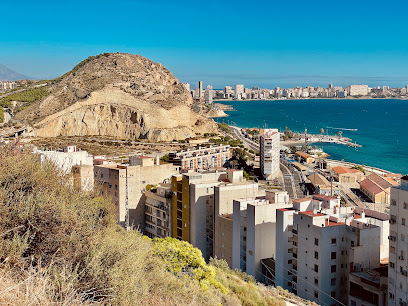
Plaça del Castell
Explore Plaça del Castell: Benidorm's scenic square offering breathtaking sea views and a glimpse into the city's rich history.
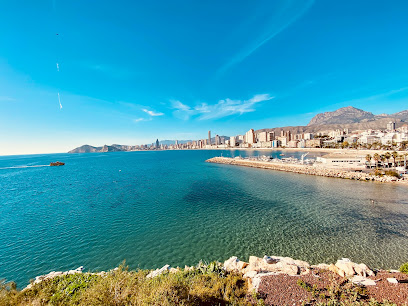
El Piruli
Experience the iconic El Piruli in Torrevieja, a monumental landmark offering breathtaking views and a glimpse into the city's rich history.

Unmissable attractions to see
Aqualandia
Experience the ultimate water adventure at Aqualandia, Benidorm's premier water park with thrilling slides and relaxing pools for all ages.
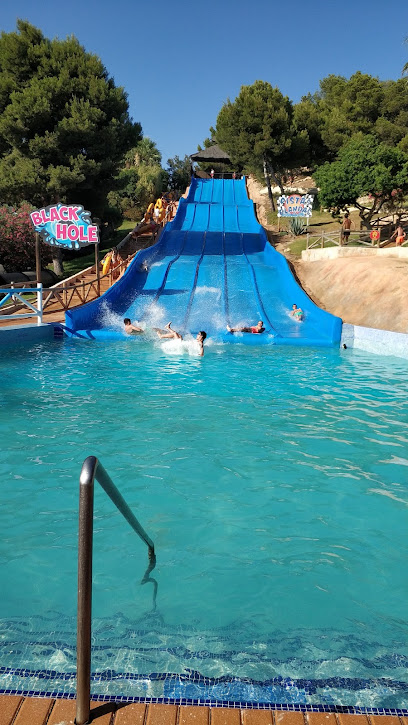
Parc Natural de la Serra Gelada
Discover the breathtaking landscapes and diverse wildlife of Parc Natural de la Serra Gelada in Alicante, a perfect nature retreat for all adventurers.
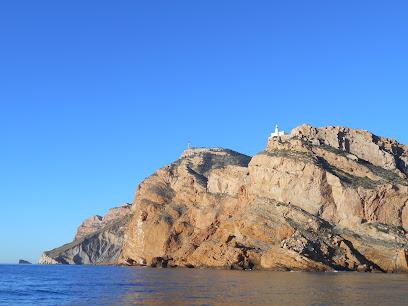
Mundomar
Discover the magic of Mundomar in Benidorm, where captivating wildlife shows and lush gardens create a perfect family-friendly adventure.
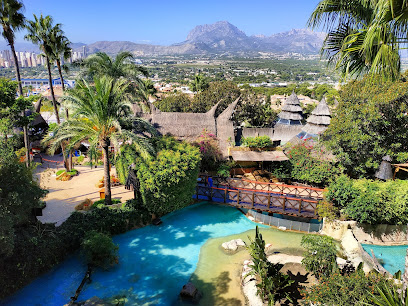
Parc El Palmeral
Discover the tranquil oasis of Parc El Palmeral in Alicante, where lush nature and serene waterfalls create a perfect escape for tourists.
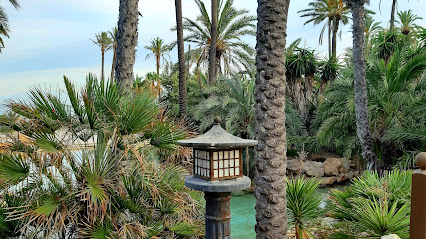
Valor Chocolate Museum
Explore the delightful world of chocolate at the Valor Chocolate Museum in Villajoyosa, where history and taste intertwine in a savory experience.
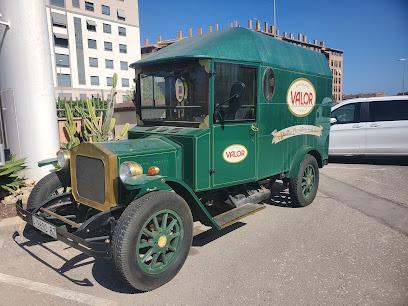
Discoteca Calle 365 Alicante
Discover the electrifying atmosphere and vibrant nightlife at Discoteca Calle 365 Alicante, where unforgettable memories await every night.
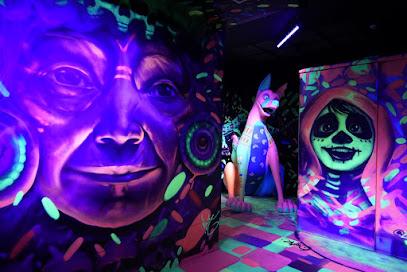
Las Casas de Colores
Experience the vibrant charm of Las Casas de Colores in Villajoyosa, where colorful houses meet the rich heritage of the Mediterranean coast.
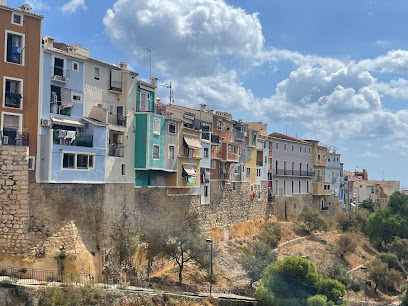
El Carrer dels Bolets
Discover El Carrer dels Bolets, a lively street in Alicante renowned for its vibrant tapas bars and authentic Mediterranean cuisine.
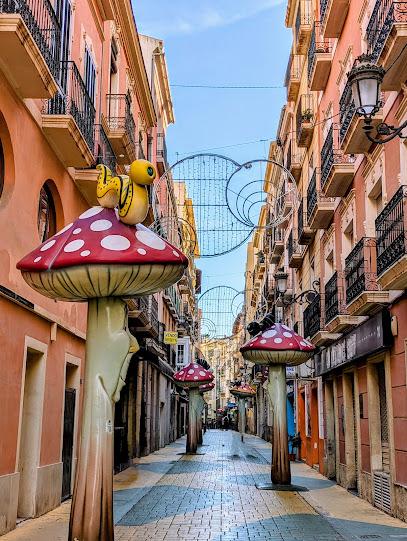
Cova Tallada
Discover the enchanting Cova Tallada in Xàbia, Alicante – a breathtaking blend of sea caves, hiking trails, and stunning Mediterranean views.
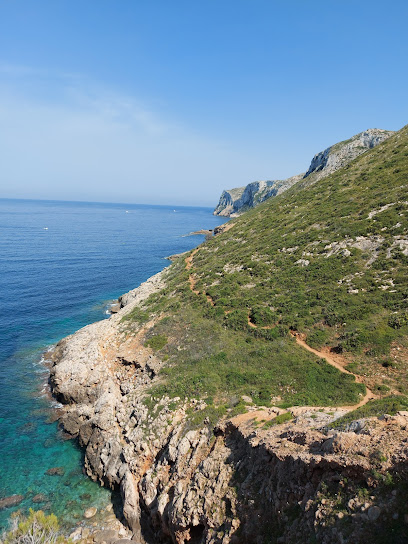
Illeta dels Banyets
Discover the ancient ruins and stunning coastal views at Illeta dels Banyets, a historical gem in El Campello, Alicante.
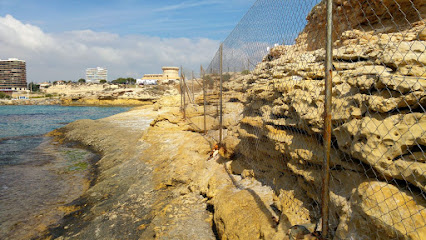
Església de Sant Jaume i Santa Anna
Discover the Església de Sant Jaume i Santa Anna in Benidorm, an architectural gem and spiritual sanctuary surrounded by vibrant community life.
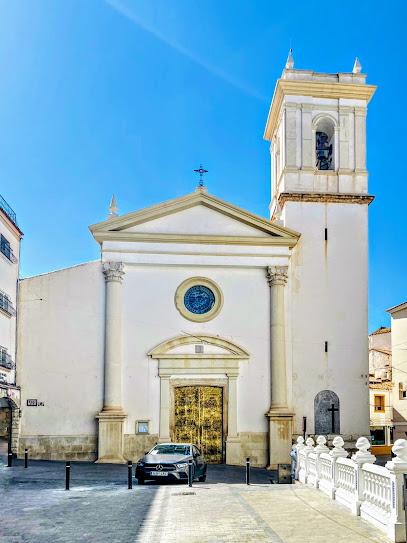
Playa de la Albufereta
Experience the beauty of Playa de la Albufereta, a serene beach destination in Spain, offering relaxation, adventure, and stunning coastal views.

Torre d'Aguiló
Explore Torre d'Aguiló, a historical treasure in La Vila Joiosa, offering stunning views, a rich heritage, and a perfect hiking adventure.
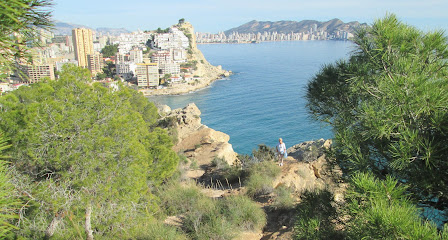
Vilamuseu
Explore the maritime history and cultural heritage of La Vila Joiosa at Vilamuseu, a captivating museum with engaging exhibits and stunning architecture.
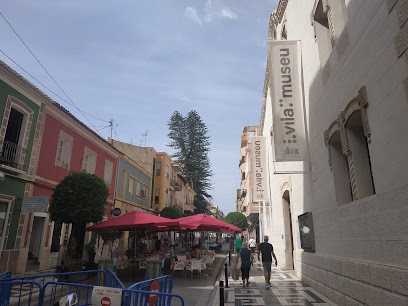
Museu de Música Ètnica de Busot
Explore the rich musical heritage at Museu de Música Ètnica de Busot, a cultural gem in Alicante showcasing global instruments and traditions.
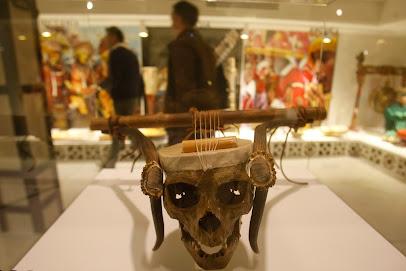
Essential places to dine
D-vora Restaurante
Experience authentic Mediterranean flavors at D-vora Restaurante in Benidorm - where every meal is a celebration of taste and culture.
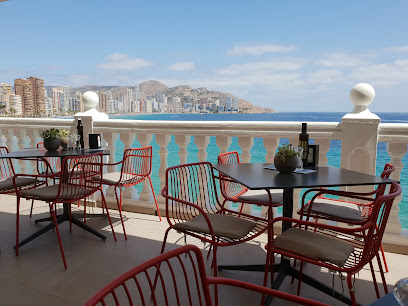
Restaurante La Bahía
Experience authentic Spanish flavors at Restaurante La Bahía in Benidorm - where every meal tells a story of Mediterranean culinary heritage.
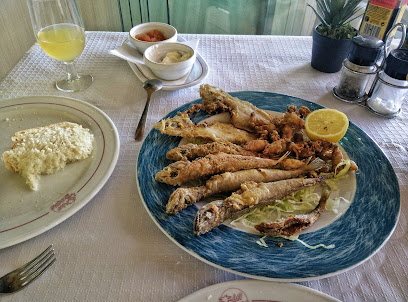
Restaurante Vela Beach
Experience exquisite Mediterranean flavors at Restaurante Vela Beach in La Mata – where every meal is a celebration of taste and tradition.
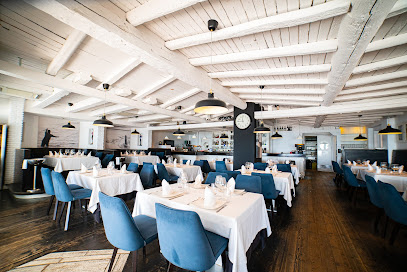
Vall de Cavall
Experience authentic Mediterranean flavors at Vall de Cavall in Dénia - where every meal is an unforgettable culinary journey.
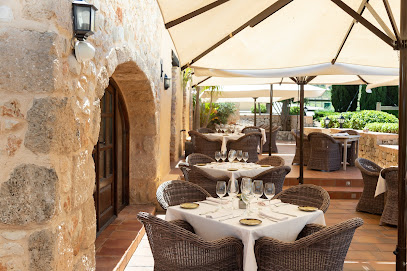
La Perla de Jávea
Experience authentic Mediterranean flavors at La Perla de Jávea – where tradition meets taste in the heart of Xàbia.

El Xato i Cristina Figueira
Experience the exquisite flavors of Mediterranean cuisine at El Xato i Cristina Figueira in La Nucia—where every meal is a celebration.
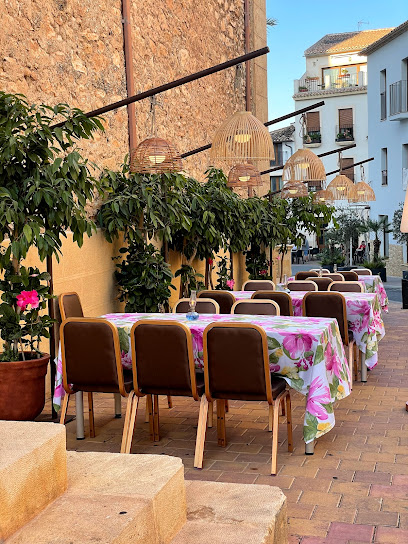
Masena
Discover Masena in Xàbia: A Mediterranean paradise serving exquisite Spanish cuisine with fresh local ingredients.
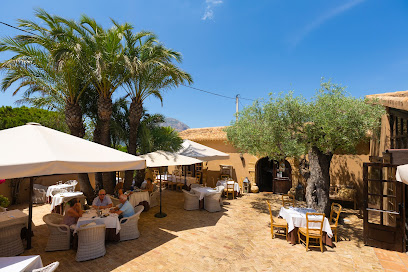
Popeyes Famous Louisiana Chicken
Experience authentic Southern comfort food at Popeyes Famous Louisiana Chicken in Villajoyosa - home of spicy fried chicken and delicious sides.
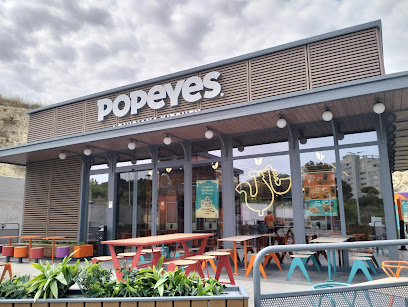
T-class
Discover exquisite Mediterranean flavors at T-Class in La Vila Joiosa - where culinary excellence meets stunning coastal views.
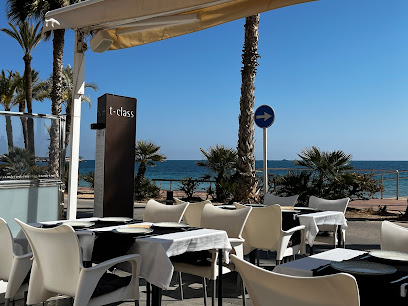
Las cuevas
Experience authentic Mediterranean and Spanish cuisine at Las Cuevas in San Miguel de Salinas – a culinary delight for every traveler.
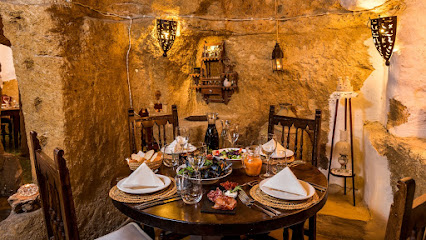
AMANTES DE MORAIRA.
Discover exquisite Mediterranean cuisine with stunning sea views at Amantes de Moraira - a true culinary gem on Spain's Costa Blanca.
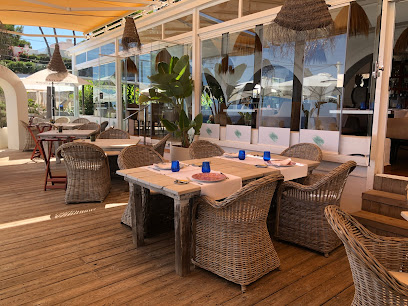
Restaurante La Rana
Experience authentic Mediterranean and Spanish cuisine at Restaurante La Rana in Benidorm – where every dish tells a story.
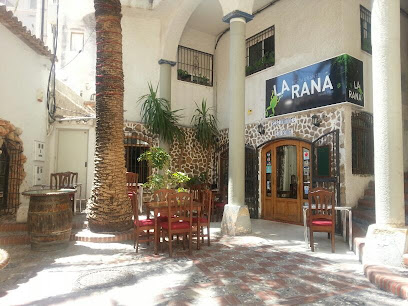
restaurante San Miguel
Experience authentic Mediterranean flavors at Restaurante San Miguel in scenic Altea—where every meal is a journey through Spain's culinary heritage.
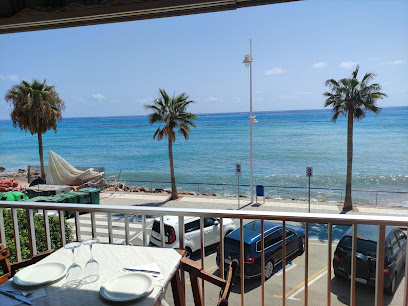
GUSTO Benidorm
Experience authentic Mediterranean cuisine at Gusto Benidorm, where every dish tells a story and every visit feels like home.
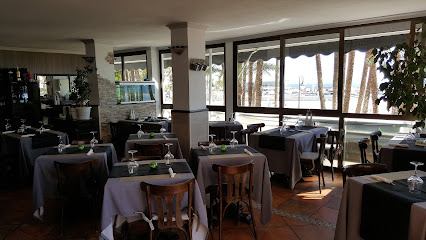
Restaurante BonAmb
Experience gourmet dining at Restaurante BonAmb in Xàbia - where Mediterranean flavors meet culinary artistry amidst stunning views.

Markets, malls and hidden boutiques
Zenia Boulevard
Discover Zenia Boulevard, a vibrant shopping mall in La Zenia, Alicante, featuring a diverse range of stores, dining options, and family-friendly entertainment.
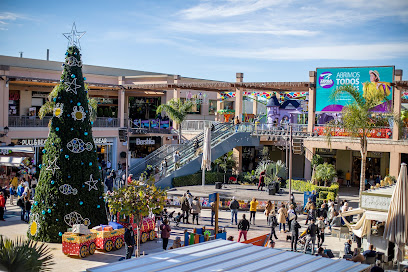
Centro Comercial Plaza Mar 2
Discover a shopping and entertainment haven at Centro Comercial Plaza Mar 2 in Alicante, featuring diverse stores, dining delights, and a movie theater.
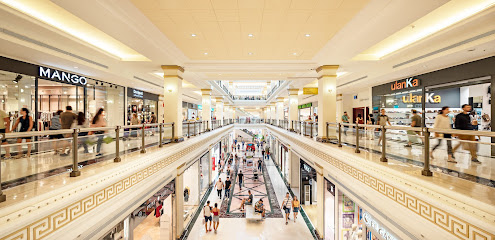
Centro Comercial Gran Vía
Discover endless shopping, dining, and entertainment at Centro Comercial Gran Vía, the ultimate destination for tourists in Alicante.
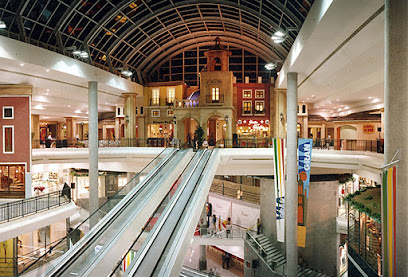
Habaneras Shopping Centre
Explore the vibrant Habaneras Shopping Centre in Torrevieja for an unforgettable shopping and entertainment experience.
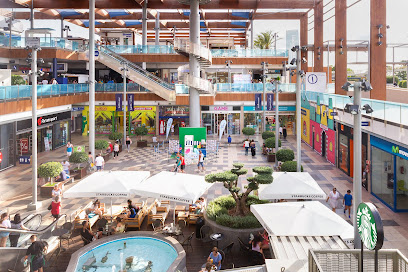
Portal de la Marina Shopping Center
Discover shopping, dining, and entertainment at Portal de la Marina Shopping Center, Alicante’s ultimate destination for tourists.
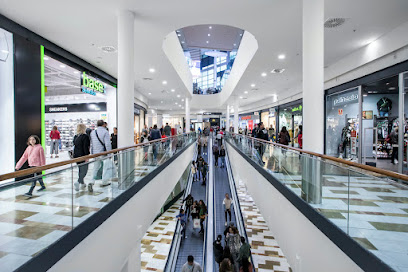
Centro Comercial La Marina
Discover Centro Comercial La Marina in Finestrat - a premier shopping destination with diverse stores, delightful dining options, and family-friendly entertainment.
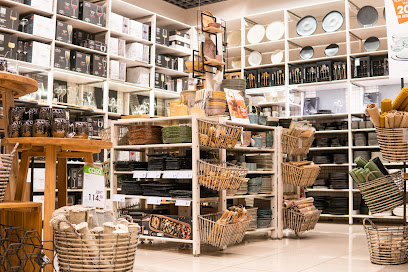
Primark
Explore Alicante's Primark for the latest fashion trends at unbeatable prices in a vibrant shopping environment.
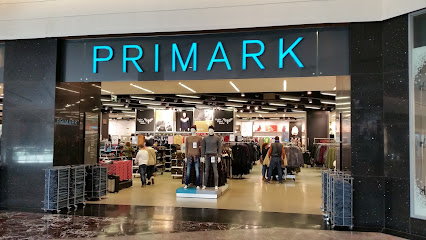
Style Market
Explore Style Market in Alicante for a unique shopping experience filled with local artisans, trendy fashion, and vibrant atmosphere.
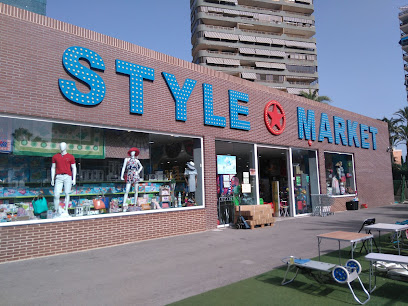
Souvenirs Costa Blanca
Explore Souvenirs Costa Blanca for unique home goods and garden furniture, capturing the essence of Spanish craftsmanship in Gata de Gorgos.
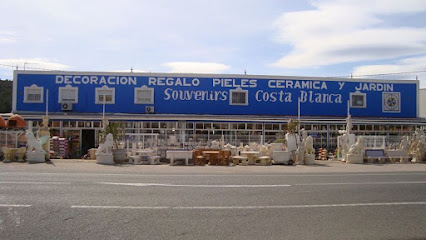
Polly's Bookshop
Discover literary treasures at Polly's Bookshop in Xàbia, Alicante - a cozy second-hand bookstore perfect for book lovers and tourists alike.

Boutique Chaplin
Explore Boutique Chaplin in La Vila Joiosa for unique fashion and accessories, blending local craftsmanship with contemporary style in a charming atmosphere.

Boutique Topio
Explore Boutique Topio in La Vila Joiosa for unique artisanal finds and a taste of local culture in a charming setting.

Kostablanca souvenirs y publicidad
Discover unique souvenirs at Kostablanca Souvenirs, the ultimate destination for authentic Alicante treasures and gifts.
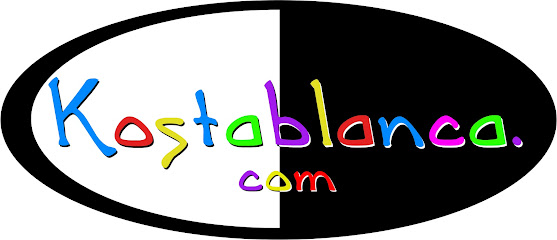
La Casa Azul
Discover the vibrant clothing collections at La Casa Azul in Villajoyosa, where Mediterranean style meets local charm.
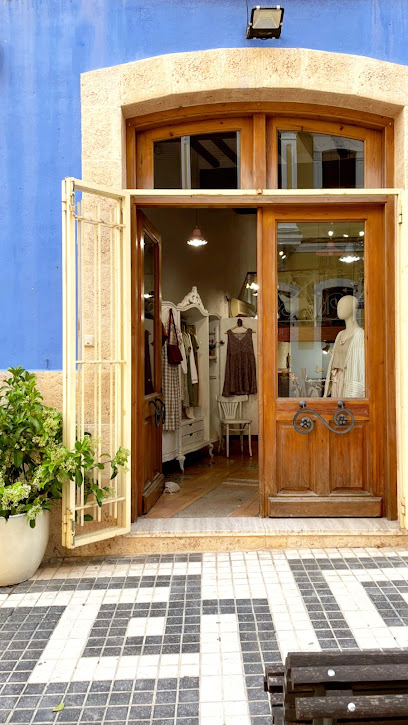
Bazar CostaBlanca
Experience the vibrant shopping and dining scene at Bazar CostaBlanca, a must-visit destination in Torrevieja, Alicante for tourists seeking local flavor.
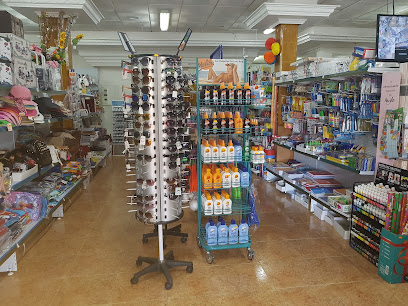
Essential bars & hidden hideouts
Rock Bar Frontera
Experience Alicante's vibrant nightlife at Rock Bar Frontera, where refreshing drinks and lively ambiance await by the beautiful Mediterranean coast.
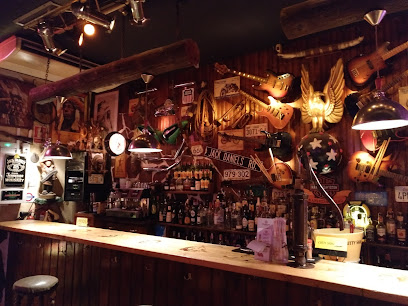
26 Cocktail Room
Experience Alicante's nightlife at the 26 Cocktail Room, where creative cocktails and a vibrant atmosphere await your visit.
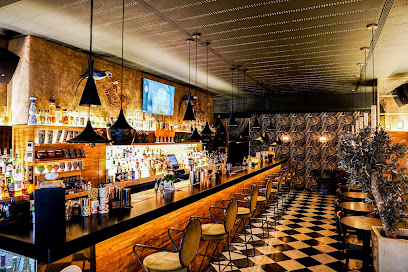
Silver Dollar Pub
Experience the lively charm of Silver Dollar Pub in Benidorm, where great drinks and a welcoming atmosphere await every visitor.
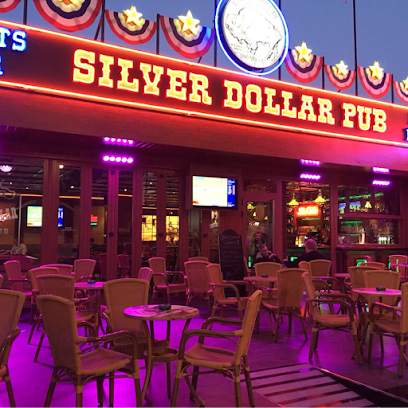
Tropical Bar Benidorm
Discover the essence of Benidorm's nightlife at Tropical Bar, where live music meets a vibrant atmosphere and delightful drinks.
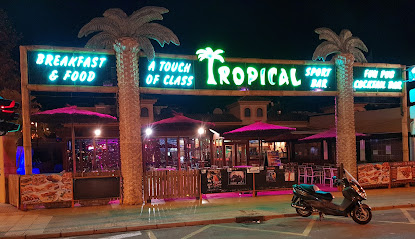
The Whisper Cocktail Company | Cocteles y Combinados
Discover The Whisper Cocktail Company in Alicante for expertly crafted cocktails and a vibrant nightlife experience in a stylish setting.
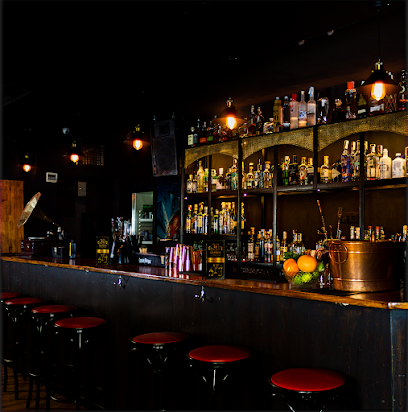
Mojito Bar Playa Pequeña
Discover Mojito Bar Playa Pequeña, an energetic bar in Benidorm serving delicious cocktails amidst stunning seaside views.
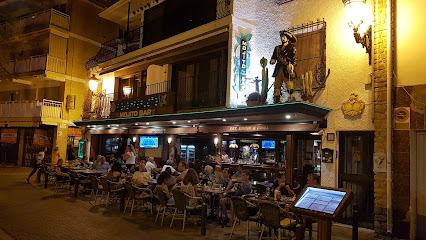
Diovio Cocktail Bar
Experience the vibrant nightlife of Orihuela at Diovio Cocktail Bar, known for its creative cocktails and lively atmosphere.
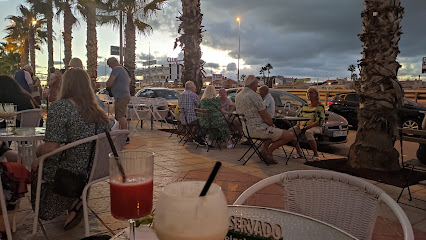
Planet Benidorm
Discover the ultimate cocktail and dining experience at Planet Benidorm, where vibrant nightlife and delicious cuisine come together.
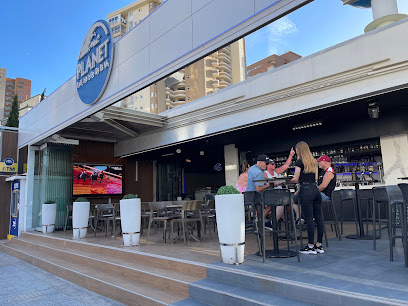
Marrs Bar Benidorm
Discover the vibrant nightlife at Marrs Bar in Benidorm, where great drinks and friendly vibes create unforgettable memories.
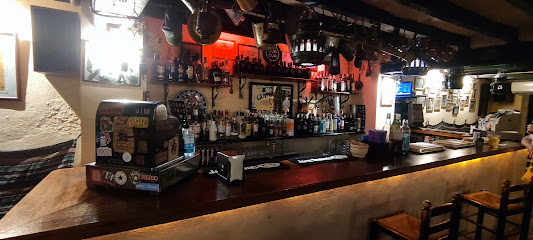
Royale Secret Bar
Experience the vibrant nightlife of Benidorm at Royale Secret Bar, where expertly crafted cocktails and a lively atmosphere await.
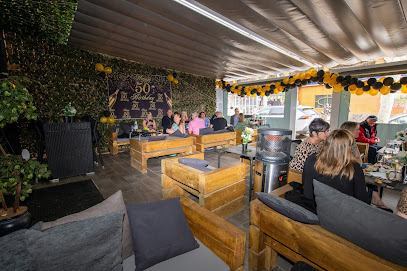
Olivers Bar
Experience the warm ambiance and friendly service at Olivers Bar, a beloved spot in Benidorm's vibrant Old Town, perfect for unwinding with drinks.
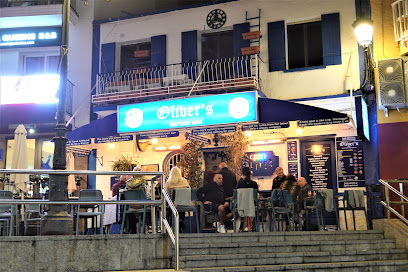
Black Pearl
Experience the thrill of sports at Black Pearl, Benidorm's vibrant sports bar with great drinks, delicious food, and an electric atmosphere.
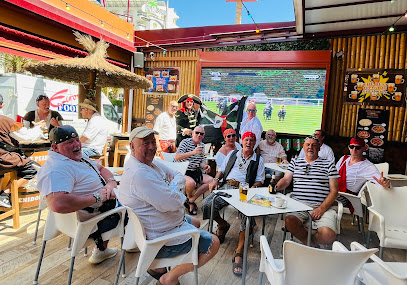
Bar 69
Experience the vibrant nightlife at Bar 69 in Benidorm, where great drinks and a lively atmosphere await every tourist.
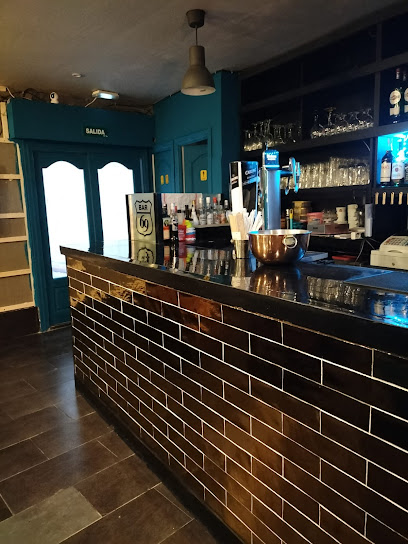
Surprise Attack Bar
Discover the vibrant nightlife of Benidorm at Surprise Attack Bar - where great drinks and live entertainment await.
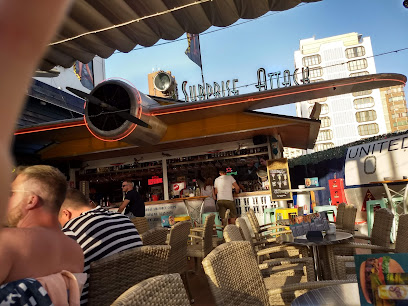
Betty boo's Benidorm
Discover the lively nightlife at Betty Boo's Benidorm – where great drinks meet a vibrant atmosphere.
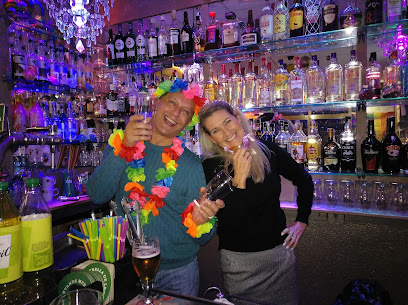
Local Phrases about Costa Blanca
-
- HelloHola
[oh-la] - GoodbyeAdiós
[ah-dee-ohs] - YesSí
[see] - NoNo
[noh] - Please/You're welcomePor favor/De nada
[por fah-vor/deh nah-dah] - Thank youGracias
[grah-thyahs] - Excuse me/SorryPerdón/Lo siento
[pehr-dohn/loh see-ehn-toh] - How are you?¿Cómo estás?
[koh-moh ehs-tahs] - Fine. And you?Bien. ¿Y tú?
[byen. ee too] - Do you speak English?¿Hablas inglés?
[ah-blahs een-glehs] - I don't understandNo entiendo
[noh ehn-tyen-doh]
- HelloHola
-
- I'd like to see the menu, pleaseMe gustaría ver la carta, por favor
[may goos-tah-ree-ah behr lah kahr-tah, por fah-vor] - I don't eat meatNo como carne
[noh koh-moh kahr-neh] - Cheers!¡Salud!
[sah-loohd] - I would like to pay, pleaseQuisiera pagar, por favor
[kee-syeh-rah pah-gahr, por fah-vor]
- I'd like to see the menu, pleaseMe gustaría ver la carta, por favor
-
- Help!¡Ayuda!
[ah-yoo-dah] - Go away!¡Vete!
[veh-teh] - Call the Police!¡Llama a la policía!
[yah-mah ah lah poh-lee-see-ah] - Call a doctor!¡Llama a un doctor!
[yah-mah ah oon dohk-tohr] - I'm lostEstoy perdido/a
[ehs-toy pehr-dee-doh/ah] - I'm illEstoy enfermo/a
[ehs-toy ehn-fehr-moh/ah]
- Help!¡Ayuda!
-
- I'd like to buy...Me gustaría comprar...
[may goos-tah-ree-ah kohm-prahr...] - I'm just lookingSolo estoy mirando
[soh-loh ehs-toy mee-rahn-doh] - How much is it?¿Cuánto cuesta?
[kwan-toh kwehs-tah] - That's too expensiveEsto es demasiado caro
[ehs-toh ehs deh-mah-syah-doh kah-roh] - Can you lower the price?¿Puedes bajar el precio?
[pweh-dehs bah-hahr ehl pree-syo]
- I'd like to buy...Me gustaría comprar...
-
- What time is it?¿Qué hora es?
[keh oh-rah ehs] - It's one o'clockEs la una en punto
[ehs lah oo-nah ehn poon-toh] - Half past (10)Las diez y media
[lahs dyehs ee meed-yah] - MorningMañana
[mah-nyah-nah] - AfternoonTarde
[tahr-deh] - EveningNoche
[noh-cheh] - YesterdayAyer
[ah-yehr] - TodayHoy
[oy] - TomorrowMañana
[mah-nyah-nah] - 1Uno
[oo-noh] - 2Dos
[dohs] - 3Tres
[trehs] - 4Cuatro
[kooah-troh] - 5Cinco
[theen-koh] - 6Seis
[sehs] - 7Siete
[syeh-teh] - 8Ocho
[oh-choh] - 9Nueve
[nweh-veh] - 10Diez
[dyehs]
- What time is it?¿Qué hora es?
-
- Where's a/the...?¿Dónde está...?
[dohn-deh ehs-tah] - What's the address?¿Cuál es la dirección?
[kwal ehs lah dee-rehk-syohn] - Can you show me (on the map)?¿Puedes mostrarme (en el mapa)?
[pweh-dehs mohs-trar-meh (ehn ehl mah-pah)] - When's the next (bus)?¿Cuándo es el próximo (autobús)?
[kwan-doh ehs ehl proh-ksee-moh (ow-toh-boos)] - A ticket (to ....)Un billete (a ...)
[oon bee-yeh-teh (ah ...)]
- Where's a/the...?¿Dónde está...?
History of Costa Blanca
-
The history of Costa Blanca dates back to prehistoric times, with evidence of Iberian settlements found throughout the region. The Iberians, known for their intricate pottery and fortified hilltop towns, left a significant mark on the landscape. Notable sites include the settlement of La Serreta in Alcoy and the ancient village of Puig Campana near Finestrat.
-
During Roman times, Costa Blanca was an important part of the Roman province of Hispania. The port city of Lucentum, located near modern-day Alicante, served as a key trading hub. Archaeological excavations have revealed Roman baths, mosaics, and remnants of a thriving urban center. This era introduced advanced engineering and architecture that influenced the region's development.
-
In the 8th century, the Moors conquered the Iberian Peninsula, including Costa Blanca. The region became part of Al-Andalus, a cultural and intellectual hub. Moorish influence is evident in the architecture of castles and fortresses such as the Castle of Santa Bárbara in Alicante and Guadalest Castle. The introduction of advanced agricultural techniques, like irrigation systems, transformed the landscape.
-
The Reconquista, a series of campaigns by Christian states to reclaim territory from the Moors, significantly impacted Costa Blanca. By the 13th century, key cities like Alicante and Elche were reclaimed. This period saw the construction of Gothic churches and cathedrals, such as the Basilica of Santa Maria in Elche. The region's culture began to blend Moorish and Christian influences.
-
The 16th and 17th centuries marked a golden age for Costa Blanca due to its strategic coastal position. The port city of Alicante thrived as a center for maritime trade, exporting agricultural products like wine, olive oil, and citrus fruits. This era also saw the construction of defensive structures to protect against pirates and foreign invaders, including the Castle of San Fernando.
-
The 19th century brought significant changes to Costa Blanca with the advent of industrialization. The development of railways and improved infrastructure connected the region more effectively to the rest of Spain. Cities like Alicante expanded rapidly, becoming centers of commerce and industry. This period also sparked a cultural renaissance, with the establishment of theaters, museums, and educational institutions.
-
The 20th century saw Costa Blanca transform into a major tourist destination. The construction of modern resorts, hotels, and amenities attracted visitors from across Europe. Cities like Benidorm became synonymous with sun, sea, and entertainment. This boom in tourism significantly boosted the local economy and reshaped the region’s cultural landscape, blending traditional Spanish customs with international influences.
Costa Blanca Essentials
-
Costa Blanca is well-connected by air, road, and rail. The nearest international airport is Alicante-Elche Airport (ALC), which serves a wide range of European destinations. From the airport, you can take a taxi, bus, or rental car to reach your final destination within Costa Blanca. If you are traveling by train, Renfe operates services to Alicante, Benidorm, and other key locations along the coast. For those driving, the AP-7 motorway runs parallel to the coastline, offering easy access from major Spanish cities.
-
Public transportation in Costa Blanca is efficient and affordable. Buses operated by companies like ALSA connect major towns and cities. Trams and trains are available in cities like Alicante and Benidorm. Taxis are plentiful, and ride-sharing services like Uber and Cabify operate in the area. Renting a car is also a popular option for exploring the region at your own pace. Bicycle rentals are available for those who prefer a more eco-friendly mode of transport.
-
The official currency in Spain is the Euro (EUR). Credit and debit cards are widely accepted in most hotels, restaurants, and shops. ATMs are readily available across Costa Blanca, so withdrawing cash is convenient. It's advisable to carry some cash, especially when visiting smaller establishments or local markets. Currency exchange services are available at airports, banks, and specialized exchange offices.
-
Costa Blanca is generally a safe destination for tourists. However, like any popular tourist area, it is important to stay vigilant. Petty crimes such as pickpocketing can occur, especially in crowded areas like markets and public transport hubs. Areas with higher crime rates targeting tourists include the central parts of Benidorm and some neighborhoods in Alicante. Always keep an eye on your belongings and avoid walking alone at night in unfamiliar areas.
-
In case of an emergency, dial 112 for police, fire, or medical assistance. Hospitals and medical centers are available in major towns and cities. It is recommended to have travel insurance that covers medical emergencies. Pharmacies are widespread and can provide over-the-counter medications for minor health issues. For non-urgent medical advice, you can visit a local pharmacy where the staff can often provide helpful recommendations.
-
Fashion: Do dress comfortably but modestly, especially when visiting religious sites. Avoid wearing beachwear away from the beach. Religion: Do respect local customs and traditions. When visiting churches, dress modestly and remain quiet. Public Transport: Do use public transport respectfully. Don't eat or drink on buses or trams. Greetings: Do greet with a handshake or a friendly 'Hola.' A kiss on both cheeks is common among friends. Eating & Drinking: Do try local dishes and tapas. Don't leave tips on the table; hand them directly to the server.
-
To experience Costa Blanca like a local, visit the local markets such as Mercado Central in Alicante where you can buy fresh produce and local delicacies. Explore smaller villages like Altea and Javea for a more authentic experience. Engage with locals, who are often friendly and willing to share their culture and traditions. Don’t miss the local festivals, such as the Bonfires of San Juan in Alicante, which offer a glimpse into the region’s vibrant cultural heritage.
Nearby Cities to Costa Blanca
-
Things To Do in Murcia
-
Things To Do in Valencia
-
Things To Do in Teruel
-
Things To Do in Almeria
-
Things To Do in Palma de Mallorca
-
Things To Do in Oran
-
Things To Do in Tarragona
-
Things To Do in Algiers
-
Things To Do in Zaragoza
-
Things To Do in Lleida
-
Things To Do in Toledo
-
Things To Do in Madrid
-
Things To Do in Barcelona
-
Things To Do in Huesca
-
Things To Do in Tlemcen













